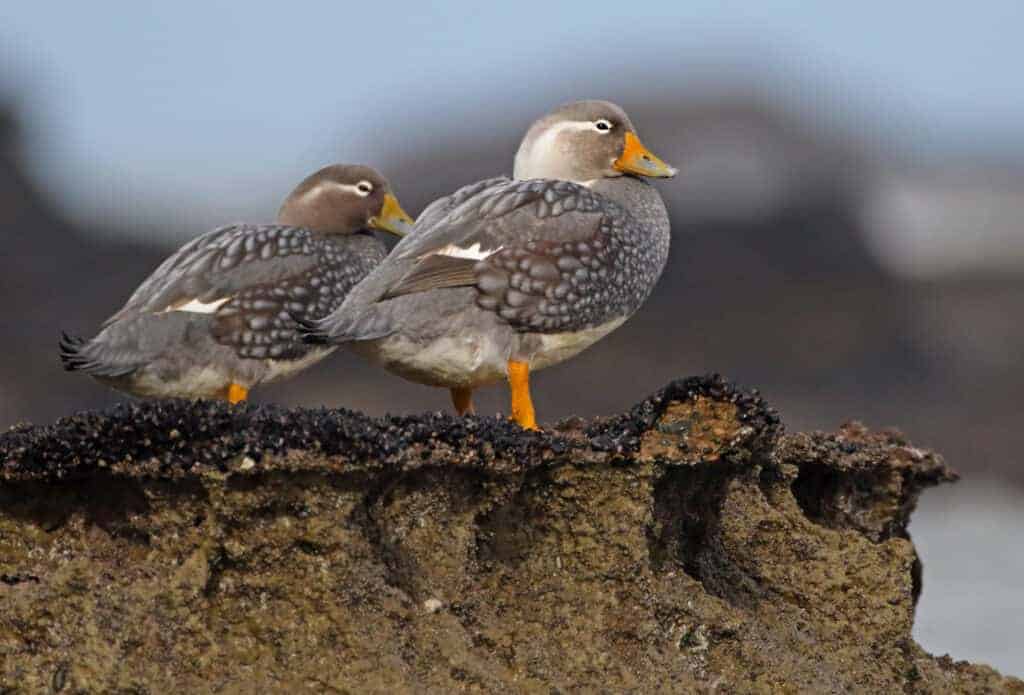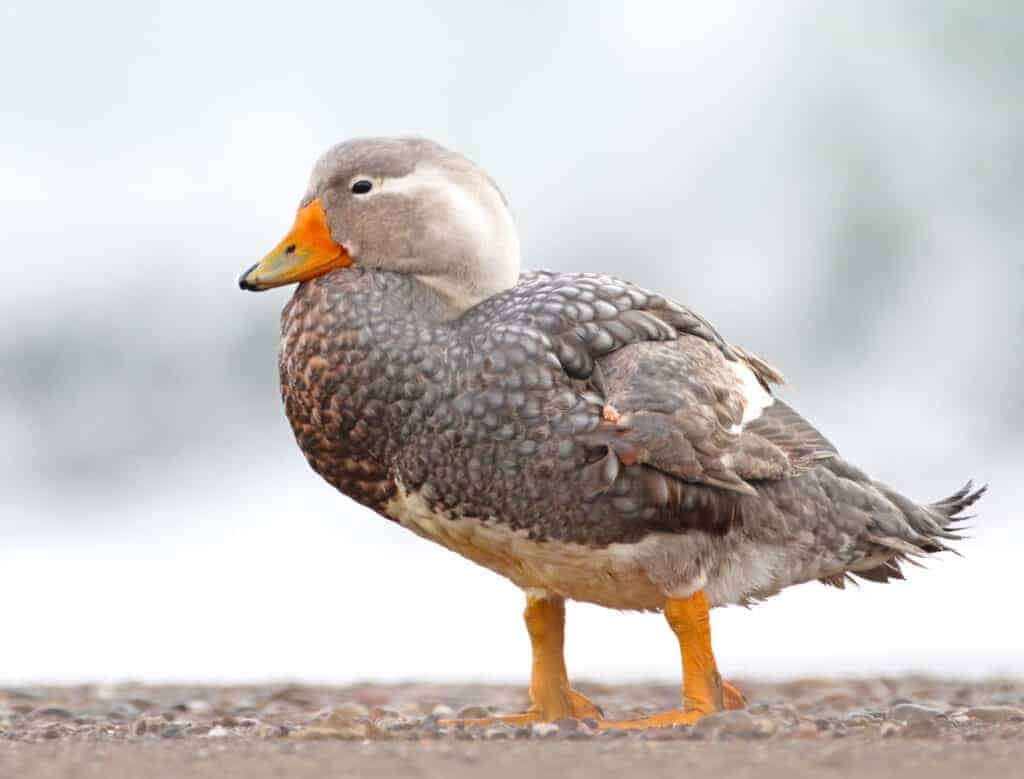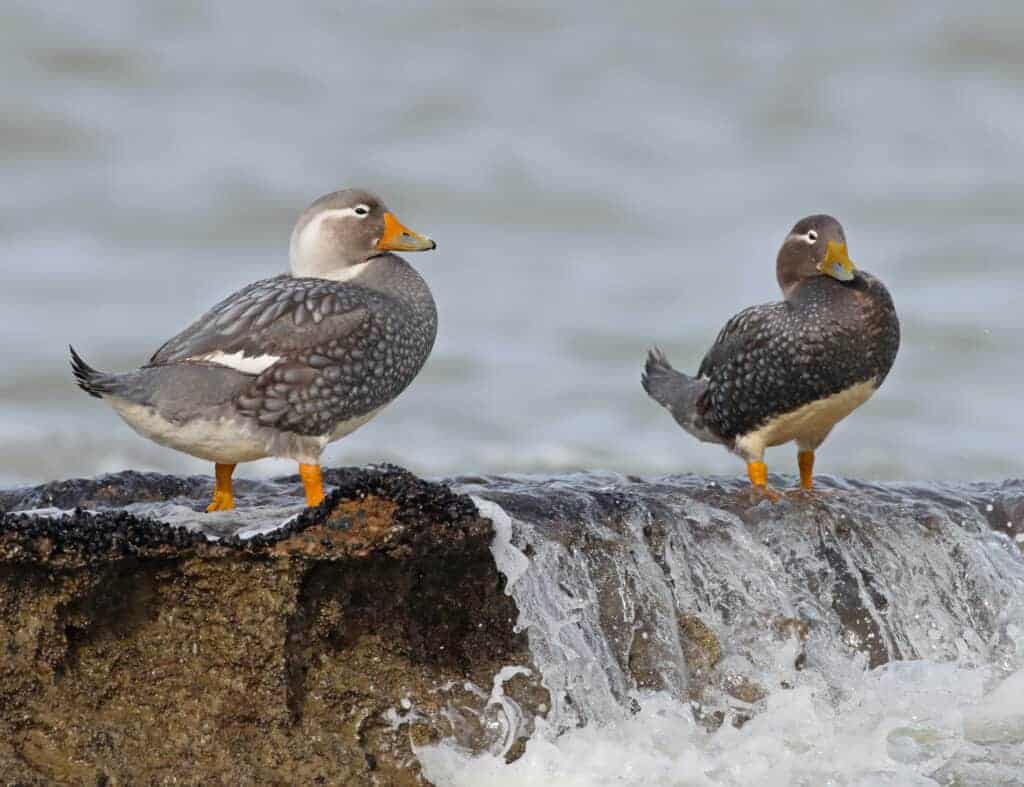Chubut Steamerduck

The Chubut Steamerduck is thought to be exclusively maritime, confined to the rocky coastline and islands in the San Jorge Gulf, Argentina. The least studied of the steamers, this species has yet to be bred in captivity. Their diet is principally molluscs and crustaceans.
Tachyeres leucocephalus
Steamerduck taxonomy has long been a source of debate. A century ago only one species was recognised, rising to two in 1934, and three two years later. The White-headed or Chubut Steamerduck was the last to be named, only gaining recognition as a full species in 1981. Its name reflects that the drake is the most white-headed of the four species, while the coast of the Argentinian province of Chubut is the only area where it can be found. Here is it is abundant.

In common with the other steamerducks, this is an aggressive and territorial duck. Though there are some surprisingly dense breeding colonies on offshore islands, this probably reflects a large population and a limited number of suitable breeding sites.
The small range of this species puts it at risk from pollution and human activity. Its conservation status is Vulnerable.

Pairs remain faithful to each other. From October to February, nests of grass, sticks and litter from the strand line are made, often utilising the protection of some shrubby cover. Clutches would seem to be smaller, at 4-6 eggs, than the other steamerducks. The young have greyish down and have been observed forming brooding crèches. Young non-breeding birds gather together in flocks.